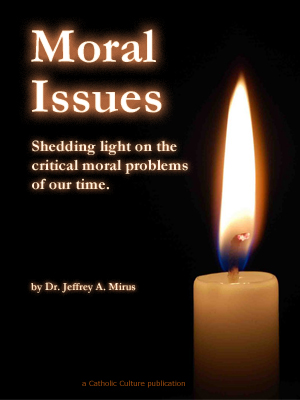Catholic Recipe: Babovka (Czechoslovakian Easter Bread)
Also Called: Bábovka
Bábovka is also a coffee cake, rich with eggs and chopped blanched almonds and baked in a round pan with a hole in the center. This feather-light delicacy is served with hot coffee for the Easter Sunday feast in Czechoslovakia.
Easter in this country is unthinkable without quantities of eggs. Housewives need them for the holiday breads and cakes. Some eggs they decorate and sell at the village market. Others they paint for the feast-day table. Boys want eggs for the Easter Monday sports. Girls, especially, require eggs, since custom decrees that they inscribe them with sentimental couplets and present them as love tokens to favored lads.
On the fourth Sunday in Lent, a group of girls lead a flower-crowned queen through the streets and chant little verses to announce the spring. Some songs include requests for eggs to make Easter cakes and end with threats such as this:
Far back behind the kitchen stove Your hen sits on her nest. We see her white eggs rolling And ask you to share with us. But if you are ungenerous And order us away Take care! Your pretty daughter Shall have no wedding day.
Great Friday and White Saturday, the Friday and Saturday preceding the holiday, are favorite times for decorating eggs. Most of the designs are traditional to certain villages or regions, since both patterns and coloring secrets are handed down from mother to daughter for generations. Some eggs are hard boiled and decorated for table use; but often people bore a hole in each end of the egg, blow out the contents for cooking use, and decorate the empty shell. Roots, vegetables, and grasses make interesting dyes. Onion skins, for example, produce beautiful soft tones of yellow and rust, while beets give pleasing reds and pinks.
Wax from homemade tallow candles, a stout needle or sharp knife, and a small lamp to heat the metal point, are the crude implements for creating a kraslice, or beautiful egg. The women decorate most eggs by a laborious process that resembles batik. First, they dip the egg into the wax. Then they etch a design on the shell with the needle or knife point. Next, they plunge the egg into a cold dye bath. They now cover the colored surface with wax and draw on another pattern. The process is painstakingly repeated many times before the exquisitely executed, glowingly colored egg finally emerges-a triumph of century-old peasant craftmanship.
All Czechs do not decorate their eggs in these traditional designs. Young girls often paint their eggs by hand, inscribe them with love messages and present them to sweethearts on Easter Monday. Easter Monday, or Pomlazka, the Day of Whipping, is Czechoslovakia's greatest youth festival. Boys braid willow branches into whips, which they ornament with flowers and colored ribbon streamers. The lads then roam about, to carol for eggs and whip the village girls "so they won't be lazy or have fleas." This symbolic custom, which probably originated in pre-Christian purification rites, supposedly brings good luck.
In return for their whippings-which are the measure of a young woman's popularity-the lads receive decorated eggs and generous portions of holiday coffee breads and cakes.
DIRECTIONS
Dissolve yeast in warm water, stir in 1 tablespoon sugar, and set aside to rise for 15 minutes. Then add 1 cup flour to yeast mixture and let rise for 30 minutes, or until spongy and light. Meanwhile, cream butter and sugar, and beat in the egg yolks. Sift together remaining 2 cups of flour and salt and add to butter- sugar- egg yolk mixture. Combine with yeast mixture. Fold in vanilla, beaten egg whites, and 3/ cup almonds. Blend thoroughly. Spoon into well-greased and floured 9-inch tube pan. Sprinkle top with remaining chopped almonds. Let rise in warm place until double in bulk. Bake in moderate oven (350° F.) for 45-50 minutes.
Recipe Source: Feast-Day Cakes from Many Lands by Dorothy Gladys Spicer, Holt, Rinehart and Winston, 1960






